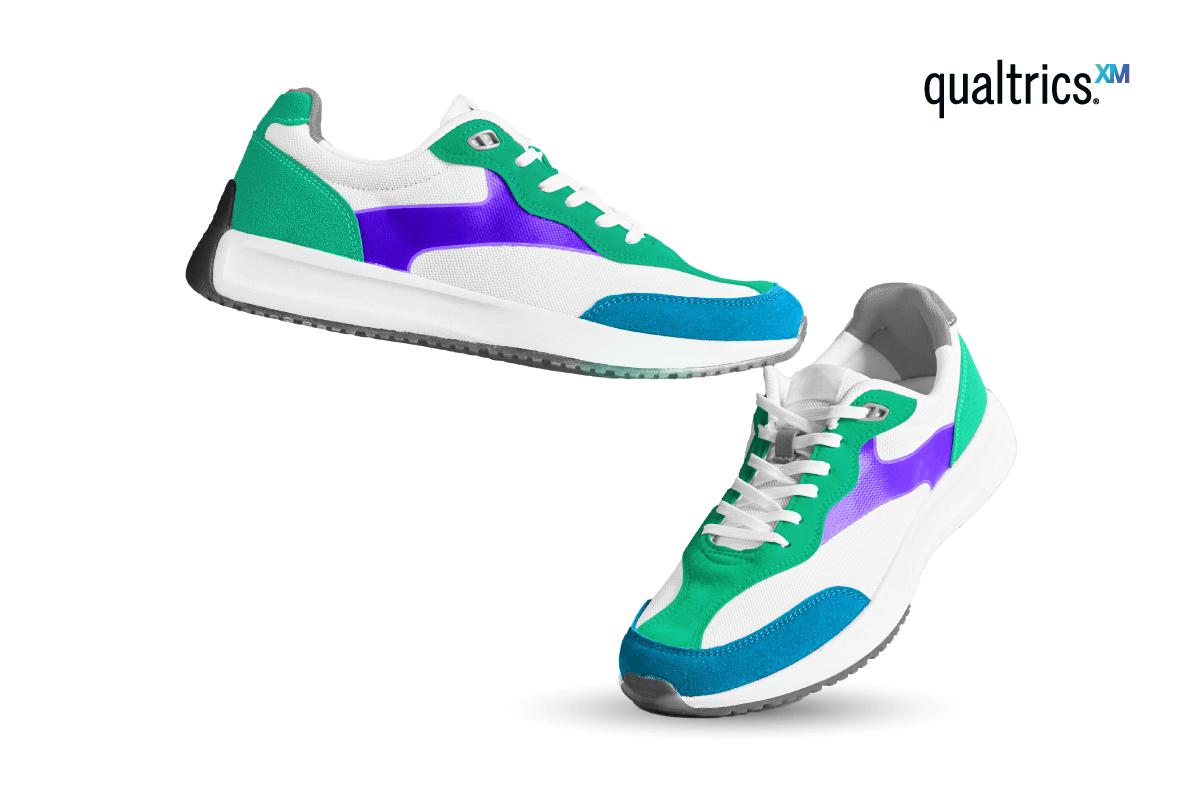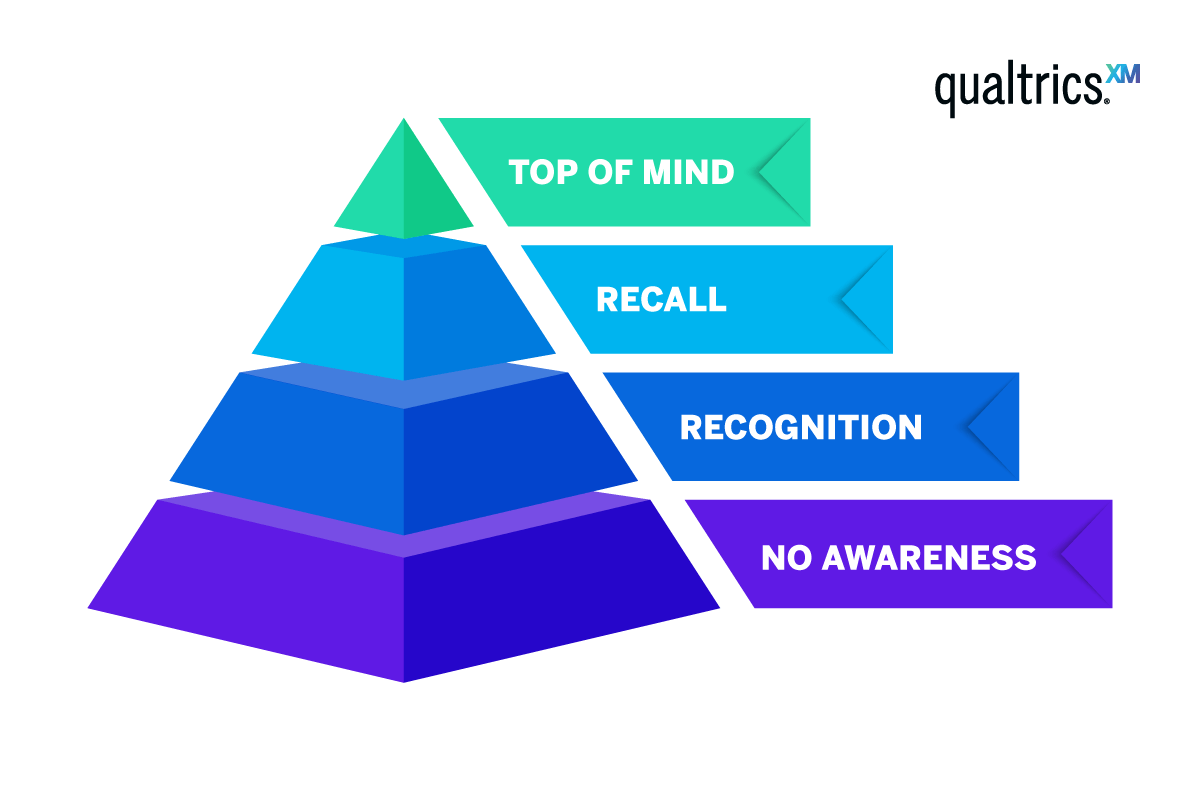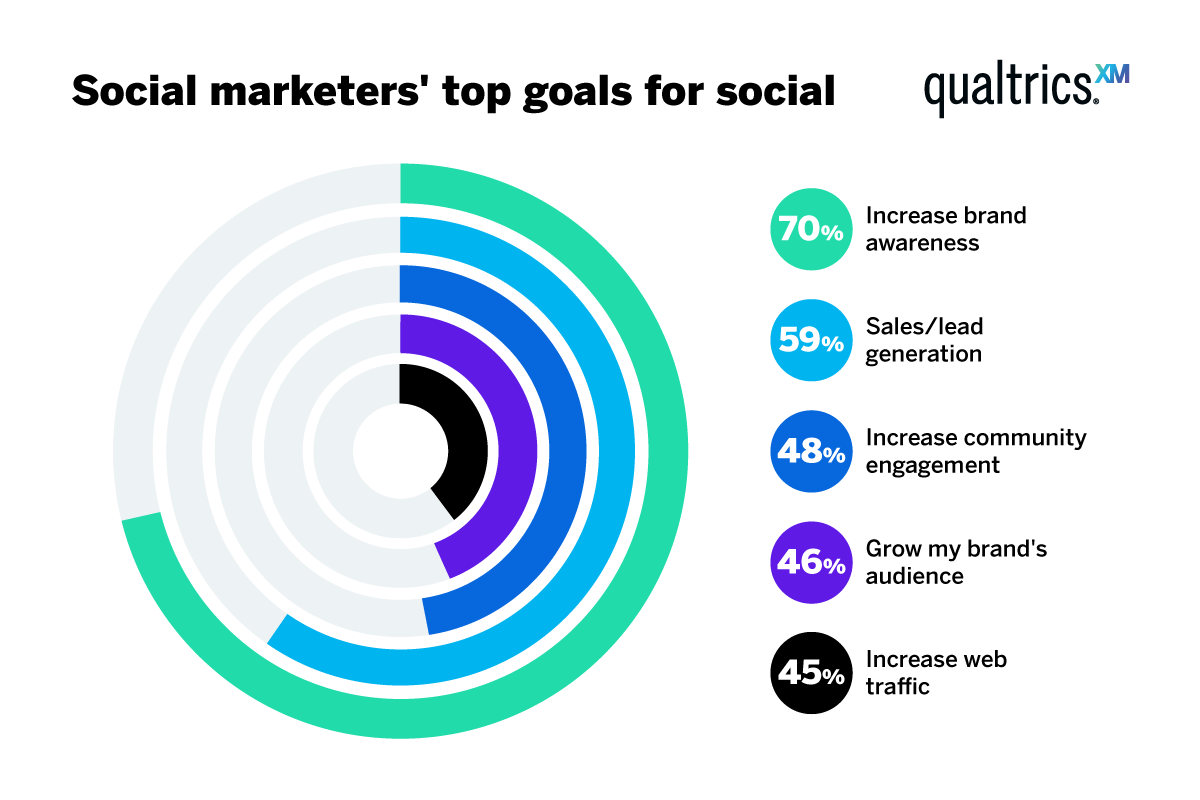When you build brand awareness, you build your brand value. And when you build your brand value, you find new audiences. But why is that important? And, crucially, what are the practical steps you can take to proactively raise brand awareness?
Branding demands commitment; commitment to continual re-invention; striking chords with people to stir their emotions; and commitment to imagination. It is easy to be cynical about such things, much harder to be successful.
– Sir Richard Branson
A quick scenario for you: imagine if we set two identical-looking pairs of sneakers down in front of you and asked you to choose one to run a 5K in. At first glance, they look exactly the same, with the same amount of foam, arch support, and weight.

It would be a tough choice, right?
Ok, now imagine that one of them has a big black swoosh on the side. You’re probably going to go with the Nikes, right? The black swoosh represents more than just Nike but the brand identity. The identity behind the logo shows, courage, athleticism and so much more. That’s the power of brand awareness.
Let’s look at what it can do for you…
Get started with our free brand awareness survey template
Why is brand awareness important?
The example above is a good starting point in recognizing the importance of building brand awareness, but there are a bunch of business benefits that come from raising your profile in the public eye. For a start, here are a few eye-opening stats:
Three killer stats about strong brand awareness:
- 46 percent of consumers would pay more to purchase from brands they trust
- Brands with consistent presentation increase revenue by as much as 33 percent
- Brand awareness takes 5-7 impressions to create.
But let’s dive a little deeper. Here are four reasons to care about your brand awareness campaigns and brand-building activities:
Brand awareness gives you a competitive edge
People are drawn to things they know and understand and we’re naturally adverse to change. In a sales environment, that translates to people sticking to brands they’re already aware of.
Imagine searching for a product on Amazon, as an example. If you were to type in ‘smartphone’, you’d be presented with hundreds of options from a range of manufacturers. But you’d probably be drawn more towards an Apple or a Samsung device than something from a brand you’ve never heard of – even if they’re much more expensive than competitor brands. The same applies to your brand. If you can get people to recognize and remember your brand among a list of competitors, you’re much more likely to win their business.
Brand awareness builds brand loyalty and trust
We mentioned in the statistics above that people are willing to pay more for products from brands they trust. Well, brand trust is a direct result of having strong brand awareness – as is brand loyalty.
Having a name and logo that people already know is like standing on an island above a sea of your less well-known competitors. Rightly, consumers hate not getting the product or service they expected when they hit ‘purchase’ – so they trust that there’ll be fewer surprises from well-known brands.
That naturally fosters a sense of loyalty. After all, if you know a certain brand will meet your needs, why risk trying something new?
Brand awareness affects who you can employ
It’s not just about consumers. People also prefer to work for brands they know, understand, and respect. In fact, LinkedIn states that companies with strong branding often see 50% more applicants for jobs than their rivals. That’s tied to findings in the same research that 75% of applicants consider the brand before throwing their hat into the ring.
Brand awareness shows things are working
An important part of any brand awareness campaign or brand-building strategy is being able to measure its results, but – really – every pillar of your company goes towards brand awareness.
In that sense, measuring an increase in brand awareness shows that everything you’re doing, from your digital presence to your customer support, is going well. And if it isn’t, then the right brand tracking software will show you where you’re going wrong.
But we’ll get to that shortly. First, let’s dive into the strategies and best practices behind creating brand awareness.

10 strategies to increase brand awareness
Need some help making your brand as recognizable as some of the world’s biggest household names? Spoilers: they’re all doing the same things, just with a relentless focus and frequency. Here’s what building brand awareness takes…
10 strategic ways to increase brand awareness:
- Prioritize consistency
- Be about more than just your products
- Give back
- Think omnichannel
- Partner with like-minded influencers
- Run a thought leadership program
- Advertise with intelligence
- Become a sponsor
- Be memorable with your output
- Measure brand awareness to increase it
1. Prioritize consistency
Consistency is a wide-reaching term when it comes to how you convey your brand. But what is consistency?
You might take it to mean keeping your visual identity uniform and recognizable across platforms, for one thing. And, sure, that’s definitely a key way to raise brand awareness. In fact, color can boost brand recognition by up to 80%, while consumers are 81% more likely to remember your company colors than your name.
But consistency goes beyond just the look and feel of your brand. We’re also talking about consistency in your tone of voice and digital output. You want everything you put out there to feel like it came from the same source, with the same values.
Consistency in your products – via rock-solid quality assurance – is also a big part of any brand awareness strategy, as is working on consistently great customer support. That can build a reputation, which promotes word-of-mouth growth, which ultimately builds brand equity and awareness.
2. Be about more than just your products
Whatever the demographic of your target audience, chances are they’re conscientious consumers who want their favorite brands to be about more than just the nuts and bolts of the business.
In other words, it pays to stand for something. Developing, publishing, and promoting your values can help you stand out from the pack, and can help form associations that build brand awareness.
Sure, great products or services are key, but if customers can remember you as also being the brand that stands for sustainability, worker rights, or supporting your local community, that’ll go a long way in terms of raising brand awareness.
3. Give back
On that score, what are you doing for your local community? What are you doing to help the world at large? It’s no longer viable to simply exist as a company that makes a great product. Consumers demand that their brands not only stand for something but actually participate in something philanthropic, too.
Our only advice here is that you’ll need to balance carefully on the tightrope suspended over pitfalls like greenwashing. The best way to do that is to be demonstrably good – and mean it. Make being altruistic part of your brand’s culture, rather than a series of PR opportunities.
4. Think omnichannel
Are you putting your best foot forward? Any brand awareness campaign must touch as many people from your target audience as possible by meeting them where they are. That means adopting an omnichannel approach to your marketing efforts.
Are your social media posts being planned for every relevant channel? Is your publishing cadence consistent across every touchpoint? And is your brand voice landing everywhere it could?
You might want to explore podcasts, for example, alongside expanding into some of the typically underserviced platforms like TikTok, Reddit, and Quora. The important thing is to strike a balance where your output is relevant and you’re not spreading your content marketing efforts too thinly.
Omnichannel also refers to your reactive strategies. Namely: customer support and forming actionable insight. It pays to be listening to what customers are saying, where they’re saying it, and that you can respond promptly.
Today, that means employing the right software to listen for you – at scale and with natural language processing designed to gather everything (from every channel) together under one roof.

5. Partner with like-minded influencers
Sometimes it pays to stand on the shoulders of giants. Influencers with enormous followings already have awareness, trust, and loyalty locked in, so why not partner with them to borrow a bit of all that brand-building goodness?
It’s a good idea to find influencers on social media platforms relevant to your business who share your values, and whose audiences would be naturally interested in your products or services. Try and avoid one-and-done deals, as there’s little to be learned or tracked from that kind of activity. Instead, adopt a ‘test and learn’ approach with partnered content on their channel that you can tweak over time.
6. Run a thought leadership program
Increasing brand awareness means not only ensuring that your target audience knows who you are, but – ideally – that they also respect you. A great way to tick both boxes is to build out a thought leadership program that positions the people behind your brand as experts in their field.
The best way to do this is to ladder up a few separate tactics that combine to form an overall package across a year (or more). Start by ensuring that your experts are posting regular industry-specific opinion pieces on LinkedIn, and cross-promote these on any other relevant owned and third-party channels.
An annual whitepaper or industry report that B2B or B2C readers will deem to be a must-read is another fantastic way to cement your brand’s place as an industry voice. Around this, see if your expert executives can appear on panels, give trade show keynotes, run events, or make podcast appearances peppered throughout the year.
As a concerted brand awareness campaign, the goal here is to put your brand’s voice at the center of the discourse – and to have all the answers to burning industry questions.
7. Advertise with intelligence
Advertising may be an age-old way to establish brand awareness, but how your adverts make their way into people’s eyeballs is ever-evolving. Digital advertising platforms are getting smarter and more targeted all the time, meaning that your brand awareness campaigns can be tailored to do exactly that: build brand awareness.
If you’re using Meta/Facebook’s advertising platform, for example, there’s a specific setting and advertising style for a brand awareness campaign, which differs from those designed to generate clicks or drive purchases.
The important thing when running campaigns is to trial various approaches using A/B testing where possible, then use all the reporting data these platforms make available to you and learn from the results to fine-tune your next run of ads.
8. Become a sponsor
Some timeless practices stick around for a reason. It’s tempting to think that simply slapping your logo on a banner here, a sportscar there, or a jersey there won’t amount to much in the way of brand recognition, but you’d be surprised.
While it’s always been tough to track direct ROI on sponsorships, it’s a marketing industry that only ever grows in size year on year, with some impressive results.
Forbes, writing about UK mobile operator O2, shows the power of leveraging a sponsorship with a clear strategy: “O2 telecommunications generated a 6X return on their entertainment sponsorship investment in the O2 Dome venue by maximizing the unique brand, activation, and customer loyalty economics the music venue offered them.
“They generated outsized returns by finding creative but financially powerful ways to leverage the unique assets of the O2 property – cultural relevance, excitement, influence – to improve brand preference, perceptions, cultural relevancy, differentiation, and awareness. They leveraged proprietary assets of the property – tickets, seating, and artist access – to gain #1 market share by improving customer loyalty 10%, willingness to refer 25%, and new customer activations by over 10%.”
Need some further reading on a smaller scale? Exhibitor Online has some eye-opening stats on the figures behind successful expo sponsorships.
9. Be memorable with your output
You want your target audience and new audiences to know who you are, but what do you want them to think about you? Presumably, not that you’re just like everyone else. Brand recognition is all well and good but what really drives brand awareness is standing out.
To that end, being different is a good thing and being disruptive in your market is even better. There’s no silver bullet for this, obviously. Instead, take a step back, track what your competitors are doing, and try and curate campaigns that can boost brand awareness simply by being memorable.
We all know examples of brilliant advertising campaigns, stunts, and slogans that stick in the mind – and they all came from brands that became household names as a result
Just remember: if you’re going to take swipes at your rivals, punching up is ok, but punching down isn’t.

10. Measuring brand awareness can help increase it
You’ll only know that your brand awareness strategy is paying off if you can measure where things stand now and compare that to how things look after your brand awareness efforts have changed. And that means measuring.
Customer surveys – including those with questions aimed at pinpointing aided and unaided brand recall – are a great way to monitor brand awareness, but if you want to get really scientific, you’ll need software that can scour social media platform interactions and keep tabs on reach and share of voice across every digital touchpoint.
In other words, you need to measure brand awareness to grow it.
And this leads us on to the most important part of the puzzle:
Build brand awareness the smart way
If you got here by searching ‘how to increase brand awareness’, then there’s really only one thing you need to remember: your efforts to increase any business metric are redundant if you don’t monitor them intelligently.
But what actually is ‘brand awareness’ in that sense? What does it look like as a metric?
Well, it’s the summation of a whole lot of individual data points – too many for any one person to stay on top of. And that’s exactly where the right software, powered by AI and machine learning, can help.

With today’s top brand tracking technology, you’ll be able to stop the guesswork and start finding answers. That’s because the best, most inter-connected software in this space can scoop up all the millions of informational gold nuggets that go into defining brand awareness and turn it into meaningful insight – insight that you can use to fuel further action.
Qualtrics’ Brand Tracker tool offers that holistic insight into your brand’s overall presence, both in real-time and over longer periods.
It automatically uncovers the key drivers that attract people to your brand, bridges the gap between external sources like social and search, uses natural language processing to analyze text for changing sentiment and trends, and makes powerful predictions about consumer behavior.
Get started with our free brand awareness survey template